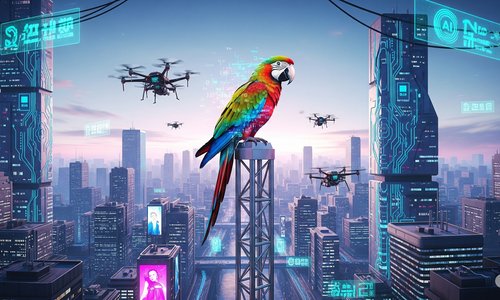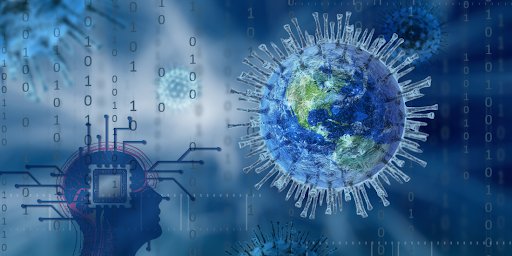
A Promessa e o Perigo da Nova Revolução Digital
A nova corrida tecnológica global levanta uma pergunta urgente: estamos prontos para confiar na inteligência que criamos?

Distúrbios informacionais, inteligência artificial:
Competências de ordem informacional e educacional demandadas
Por Barbara Coelho Neves
Em meados de 2020, a revista The Lancet: infectious diseases destacou, em um de seus artigos (O’CONNOR, 2021), que notícias enganosas sobre a pandemia abalaram a confiança da população em geral com relação às organizações de Saúde. Outra pesquisa (AVAAZ, 2020) também mostra que um (1) em cada quatro (4) brasileiros afirma que não tomaria a vacina contra a COVID-19, tendo como justificativa alguma notícia falsa. As notícias falsas ou fake news fazem parte de um leque mais amplo de anomalias conhecidas como distúrbios informacionais.
A UNESCO alcunhou o termo Informational Disorder (Distúrbios Informacionais ou Desordem Informacional) para designar a variedade de casos de narrativas falsas e manipuladoras, levando em consideração sobretudo os casos de “fake news” que se utilizam do componente fotográfico para dissuadir as pessoas, como é o caso das Deep Fakes. Compreende-se por Distúrbios Informacionais um conjunto de fenômenos de proporção mundial e altamente dinâmicos, mutáveis e que urgem por maiores descobertas e ações de controle, sendo necessário considerar maiores pluralidades nos pontos de vista sobre o mesmo.
Nesse contexto, a pandemia de informações fraudulentas, também chamada de infodemia, cria dificuldades para o cidadão comum recuperar, escolher e usar informações. Neves e Borges (2020) apontam recursos usados para enfrentar a desinformação e as notícias fraudulentas, que foram identificados em artigos selecionados na base de dados ERIC, com descritores escolhidos a partir do Tesauro Internacional de Educação e com recorte temporal de 2016 a 2019. Neves e Borges destacaram como principais recursos para combater as notícias fraudulentas:
● estimular o debate crítico,
● alfabetização midiática e
● estratégias metacognitivas.
Grossi, Leal e Silva (2021) sinalizam para a importância da educação midiática que abrange o desenvolvimento de competências para combater a desinformação e as notícias fraudulentas. A educação midiática frente ao contexto da pandemia de informações pode ser uma das alternativas capazes de apoiar a filtragem de informações com base em um conjunto de habilidades para que o indivíduo seja capaz de compreender e usar corretamente as mídias, tornando-se capaz de ser um cidadão ativo.
A pandemia de informações da Covid-19 evidenciou que as culturas (material, imaterial e todos os seus tipos, inclusive erudita e de massa) estão em constante consonância com a cultura digital. Nesse contexto, durante a pandemia da Covid-19, pôde-se compreender que qualquer iniciativa na tentativa de controle das notícias fraudulentas e da desinformação passa pela apropriação dos recursos, da competência informacional e da educação midiática na cultura digital.
Compreende-se que a inteligência artificial pode ser uma ferramenta eficiente no combate às fake news, por meio da associação dos direcionamentos da Alfabetização Midiática Informacional (AMI). A AMI é um conjunto de habilidades para acessar, analisar, criar e participar de maneira crítica do ambiente informacional e midiático em todos os seus formatos, suportes e extensões.
Aplicações baseadas em processamento de linguagem natural (PLN) podem ir na contramão do “superávit comportamental”, apontado por Zuboff, utilizando os conglomerados de dados para favorecer a educação midiática. A inteligência artificial se mostra como a expansão da inteligência humana para além do corpo biológico. Em paralelo, estão as habilidades necessárias para lidar com os desafios de dados e informações de ordem fraudulenta gerados por processos avançados da fabricação de conhecidas aplicações de inteligência de máquina. O que estamos propondo se insere na famosa frase do psiquiatra norte-americano, Milton Erickson (1901-1980), o pai da hipnose moderna: “No veneno está o antídoto”.
A inteligência artificial tem ampliado de forma significativa contextos de desinformação quando aplicada de forma intencionalmente maliciosa. A dificuldade de combater notícias falsas é ainda maior quando se tem a aplicação de Deep Fakes e bots como agentes inteligentes que se conectam para difundir conteúdo viral. Estes agentes utilizam recursos de inteligência artificial, deixando cada vez mais difícil identificar aspectos que apontem que a informação não é verdadeira.
No contexto dos agentes disseminadores de informações falsas, vale salientar que as Deep Fakes são ainda mais preocupantes, pois são capazes de alterar imagens e vídeos. As imagens, antes que eram consideradas mais difíceis de inserir fraude, com o uso de Deep Fake se tornam também fontes enganosas.
As Deep Fakes são criadas com recursos de deep learning e possuem a capacidade de sobrepor textos, áudios e alterar imagens estáticas e em movimento. Com esta ferramenta é possível plagiar vídeos e imagens, realizando alterações, que com o recurso da inteligência artificial, fica imperceptível, diferente das alterações realizadas antes em ferramentas de edição para alteração de imagens convencionais. A Deep Fake pode sobrepor, trocar ou misturar rostos e até mesmo mudar vozes sem que seja possível perceber as alterações realizadas. Antes era possível identificar sinais de alteração como lábios borrados e sombras nos vídeos que mostravam se tratar de um distúrbio informacional (Informational Disorder). No caso das mudanças realizadas com faces misturadas de várias pessoas, o distúrbio está sendo chamado de Fake Faces.
Diante de tamanha problemática - para apontar a urgência de se pensar cada vez mais inovações que visem mitigar, diminuir ou controlar as notícias falsas (versão século XXI) - é que chamamos a atenção para a competência informacional, para Alfabetização Midiática Informacional e para a educação midiática, como conjuntos de habilidades já estabelecidos e necessárias para lidar com tamanha situação. No caso específico das “deep fakes”, a competência visual, defendida na Ciência da Informação, recentemente, em tese por Daniel Cerqueira Silva na ECA-USP, pode ser disponibilizar um conjunto de estratégias que apresenta a fotografia digital adulterada. Silva (2021) apresentou como produto do seu doutorado o aplicativo de “Olho na Fake”. O aplicativo utiliza como modelos de referência ARCS, Taxonomia de Bloom, teoria do Flow, MEGAA+ e UX Design associados a Gameficação.
Assim, uma vez diante da fotografia, trata-se de buscar a unidade melódica de suas luzes, linhas e direções, suas escalas e volumes, seus eixos e suas sombras, enfim, contemplar a atmosfera que ela oferta ao olhar, pois a significação imanente dos motivos e temas fotografados é inseparável do arranjo singular que o fotógrafo escolheu apresentar (SANTAELLA, p.76, 2012).
Encerramos nossa reflexão com o trecho de uma palestra da Dora Kaufman em 2021, que chama atenção ser preciso aumentar o grau de conhecimento e conscientização da sociedade com relação às tecnologias de inteligência artificial. Acreditamos que é urgente que se capacite as pessoas a mitigar e a enfrentar seus riscos da nova conjuntura social que envolve infodemias, e toda uma gama de distúrbios informacionais, e inteligência artificial, como também criarem alternativas baseadas em competências humanas para lidar com a máquina inteligente.
*Barbara Coelho é professora da UFBA. Pós-doutora em Ciência da Informação. Atualmente coordena o Comitê de IA na Educação da I2AI e é consultora do Artificial Intelligence Special Interest Committee IFLA.
Doctor in Education (UFBA). Post-Doctor in Information Science (UNB). Professor at UFBA. Permanent Professor at PPGE-UFBA. Researcher at PPGCI-UFSCar. Lead researcher at the Informational Technologies and Sociodigital Inclusion Laboratory (LTI Digital - ltidigital.ufba.br). Open Knowledge Foundation Civic Innovation Ambassador.
Atualmente realiza investigação das Aplicações de IA na Educação.

A nova corrida tecnológica global levanta uma pergunta urgente: estamos prontos para confiar na inteligência que criamos?

Por que dominar a IA será a nova alfabetização do século XXI

Conselhos de Administração devem evoluir da supervisão reativa para a antecipação estratégica, frente à crescente complexidade e volatilidade dos ambientes de negócios.

De 14 a 25 de julho, reserve suas manhãs das 08h00 às 09h30 para participar da tradicional Maratona I2AI! Uma jornada intensa com debates e palestras sobre temas essenciais: Ética,